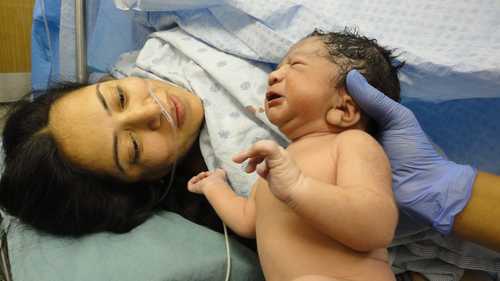The birth of a baby should be a wonderful time for parents. Families trust medical professionals to provide the highest quality of care in order to keep the mother and baby safe and healthy. There are things that the family shouldn't have to worry about, such as preventable medical errors that endanger the mother and the baby's life. Some of these types of medical mistakes are called "Never Events." Never Events are also considered "Sentinel Events" by The Joint Commission.
In obstetrics, labor, and delivery, there are particular Never Events that can cause serious, permanent injuries or death to the mother or baby. A common injury we see in our birth injury practice is permanent brain injury to the baby from lack of oxygen during labor, which can lead to hypoxic-ischemic encephalopathy, or "HIE," which in turn can lead to cerebral palsy and all its related cognitive and physical disabilities and developmental delays.
Here are the key labor and delivery Never Events:
- Maternal death or serious injury associated with labor or delivery in a low-risk pregnancy while being cared for in a health care setting
- Death or serious injury of a neonate associated with labor or delivery in a low-risk pregnancy
- Artificial insemination with the wrong donor sperm or wrong egg
- Abduction of a patient
- Maternal or infant death or serious injury resulting from failure to follow up or communicate laboratory, pathology, or radiology test results
- Maternal or infant death or serious injury associated with a medication error (e.g., errors involving the wrong drug, wrong dose, wrong patient, wrong time, wrong rate, wrong preparation, or wrong route of administration)
- Unintended retention of a foreign object in a patient after surgery or other procedure
- Wrong surgical procedure performed on a mother or infant (e.g. circumcision, tubal ligation)
- Infant discharged to the wrong person
- Death or serious disability of a fetus/infant with a reassuring fetal heart rate (FHR) pattern on mother's admission for labor, barring any acute unpredictable event
- Prolonged periods of uterine hyperstimulation during oxytocin or misoprostol administration
- Prolonged periods of nonreassuring fetal heart rate (FHR) pattern during labor unrecognized and/or untreated with the usual intrauterine resuscitation techniques
- Uterine rupture following prostaglandin administration for cervical ripening/labor induction to a woman with a known uterine surgical scar
- Infant death or disability after multiple attempts with multiple instruments to effect and operative vaginal birth
- Infant death or disability after prolonged periods of repetitive coached second-stage labor pushing efforts during nonreassuring FHR pattern
The Joint Commission issued Sentinel Event Alert Number 30 in 2004 on the topic of preventing infant death and injury during delivery. The Joint Commission found that the most common root cause of unexpected infant death/injury was communication issues (72%), with over half of the organizations involved citing organization culture as a barrier to more effective communication and teamwork, such as hierarchy, intimidation, and failure to function as a team. Other root causes of injuries to babies in labor and delivery included staff competency (47%), orientation and training process (40%), inadequate fetal monitoring (34%), unavailable monitoring equipment and/or drugs (30%), credentialing/privileging/supervision issues for physicians, residents, and nurses (30%), and physician unavailability (19%).
The use of Pitocin (oxytocin) to induce labor, and other inappropriate interventions during labor and delivery, can greatly increase the risk of a serious injury or death to both the mother and the baby as well.
When events like these happen, it can be a sign that the healthcare facility has fundamental and systematic safety problems that are putting mothers and infants at serious risk. While no amount of money can heal the damage caused by a Never Event, a settlement can help pay for the huge past and future medical expenses associated with serious injuries and conditions like cerebral palsy.
Contact Daniel Pleasant Holoman to talk to someone about your case - we have attorneys with extensive experience in litigating birth injury cases and are licensed in North Carolina, Kentucky, Tennessee, and Georgia. We take cases on a contingency basis, meaning that there are no out of pocket costs to you if we do not recover money for you.

